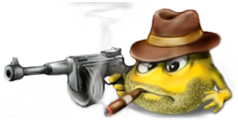"Нашла случайно Ваш сайт. Была уставшая и злая после работы, но Ваши картинки "поработали" психотерапевтами. Спасибо)) и, как говорят у нас в Украине творческим людям: натхнення!" Леся

"Нашла случайно Ваш сайт. Была уставшая и злая после работы, но Ваши картинки "поработали" психотерапевтами. Спасибо)) и, как говорят у нас в Украине творческим людям: натхнення!" Леся |
 |
|
Copyright © 2004-2025 Kolobok Smiles All rights reserved |
 |